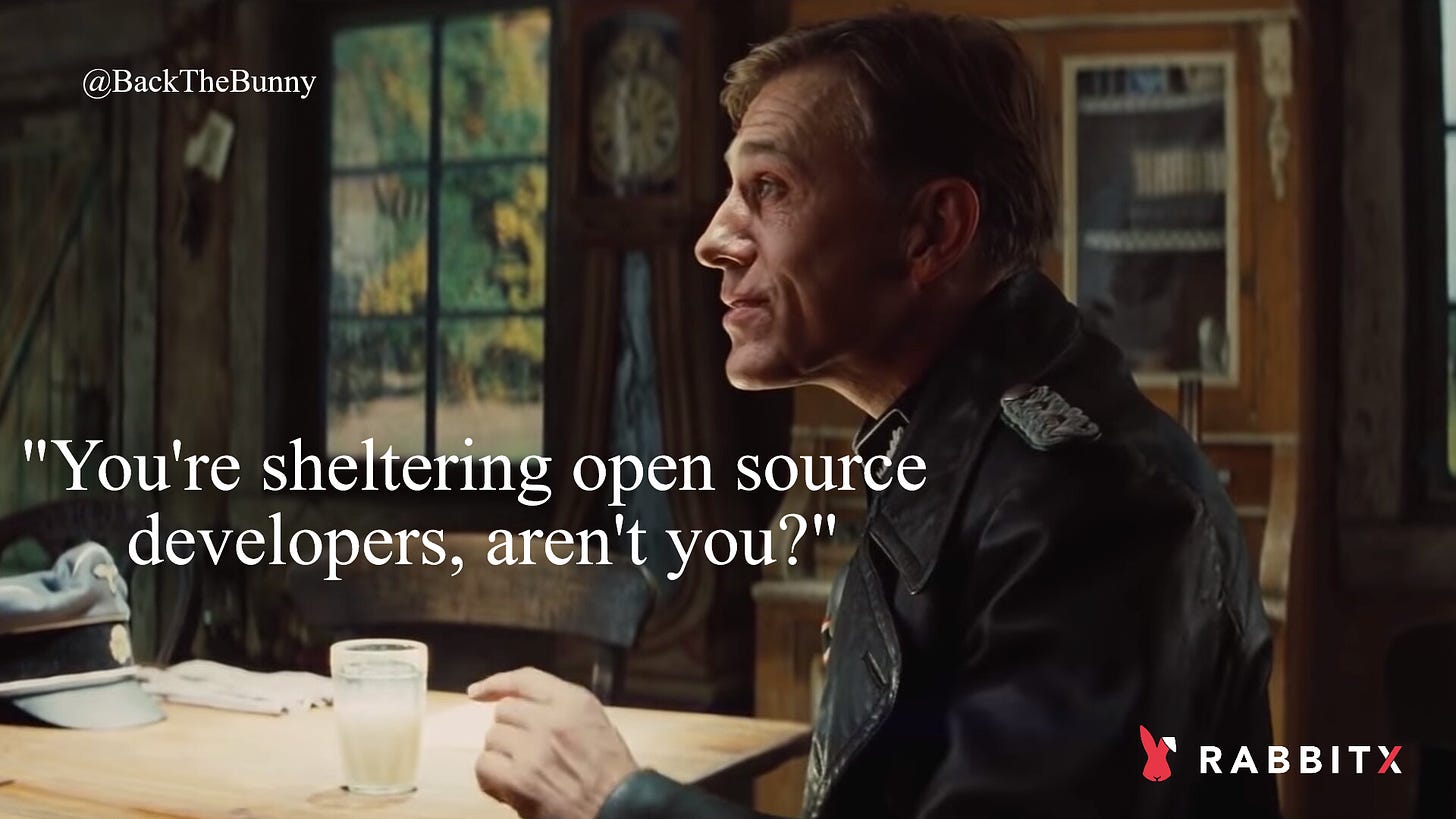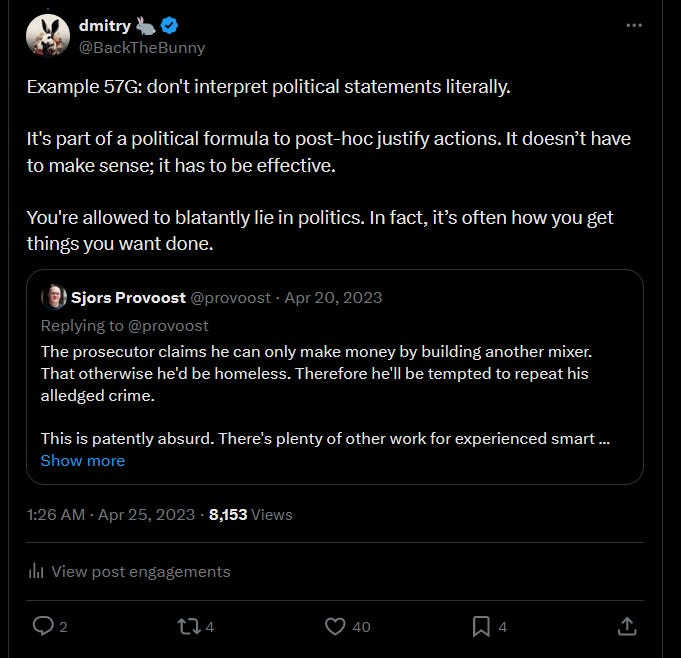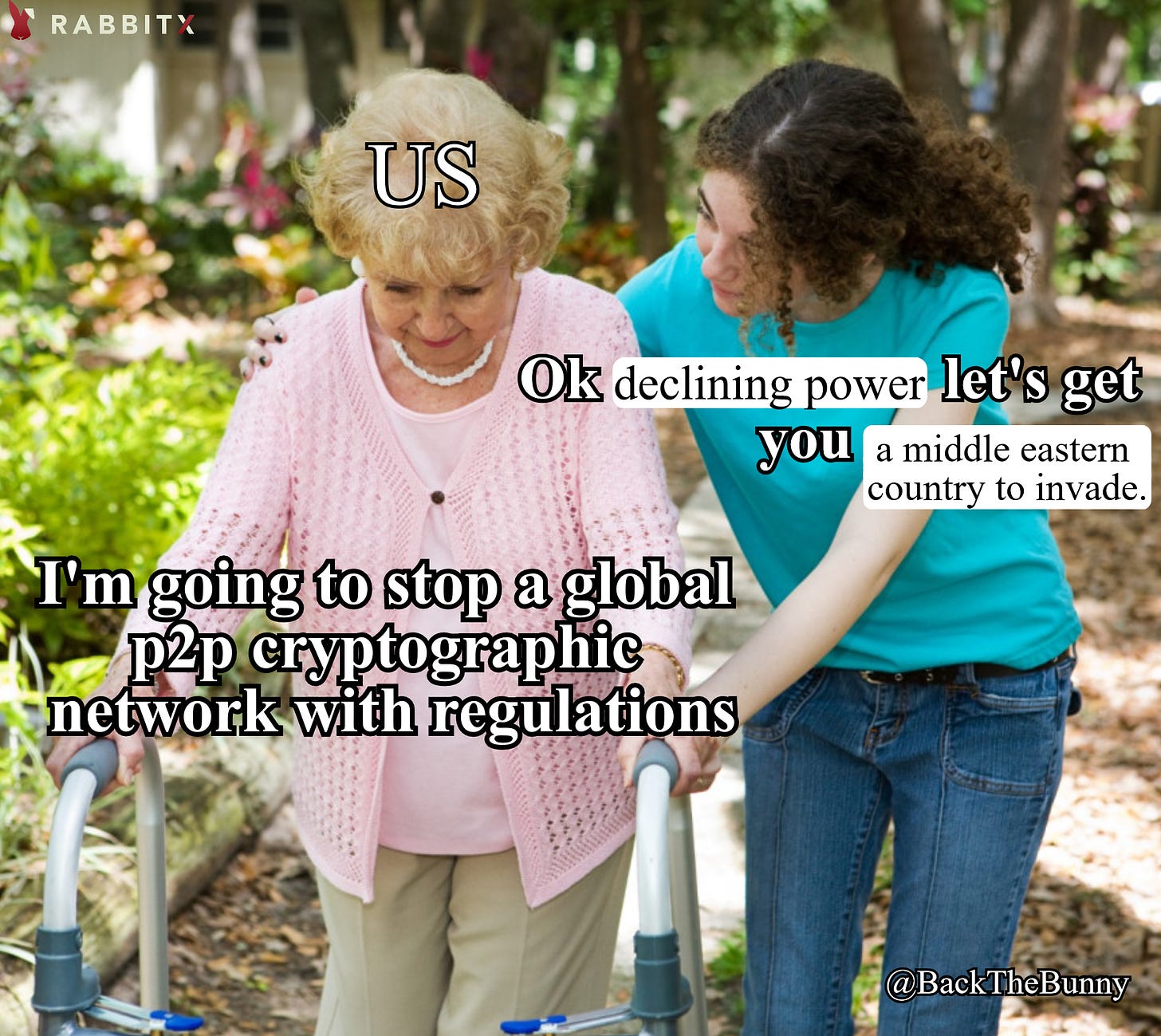Generations of War, Business, and Crypto: Part I
Generations of war inform business generations. Warfare is a harbinger for adversarial domains. I believe this has application for DeFi.
This Generations of Warfare, Business, and Crypto series is related to concepts and predictions I’ve covered in The Vietnam Thesis and The US Dollar: A Proof of Violence Network. You could think of these pieces as preludes.
Historically, generations of warfare and business have correlated closely with each other. However, there’s a lag between them: warfare is roughly one cycle ahead of business.
Using militaries as a leading indicator, you’ve been able to predict emergent business behaviors before they’ve manifested. Warfare strategy is compelled to adapt to new dynamics more readily, motivated not by profit, but by survival. I believe warfare can be a prognosticator for any sufficiently adversarial domain…. such as crypto.
Warfare has been a harbinger for business, and I think it can be for crypto as well. Using insights from military strategy, what can we expect for DeFi’s future generations? Where is DeFi in its evolution compared with business and war?
This is Part One of a multi-part series that analyzes business and warfare generations, and draws parallels and predictions for DeFi’s past, present, and future.
1st Generation
1st-Generation Business:
1st-gen business coincides with 1st-gen warfare, but is comparatively more medieval and rudimentary in its operations (remember warfare is always one developmental cycle ahead of the business cycle it coincides with). 1st-gen business was often conducted through trade and merchant guilds, which meant groups of dealers in similar industries colluded to regulate prices and protect their interests. 1st-gen business was subject to control by feudal lords, the state, and the Catholic church. The church owned a lot of land and had a monopoly on certain trades.
1st-Generation Warfare (one cycle ahead):
1st-gen warfare was a departure from medieval strategies, and utilized linear tactics with line-and-column techniques in direct combat, with muskets and conscripted armies.
1st-gen warfare began to see emergent centralization, with professional officers leading armies of full-time, uniformed, paid soldiers fighting for nations instead of feudal lords. Its tactical organization was limited, due to inferior communications and intelligence capabilities.
1st-Generation Crypto (not yet DeFi):
Crypto’s 1st gen begins at the creation of Bitcoin in 2009. It introduced the concept of onchain assets with artificial scarcity that exist purely in digital space. A token possessing value both via a market price and by way of remitting payments with no central intermediary. Crypto’s 1st gen is somewhat medieval, like its business counterpart, in that it facilitated simple transactions to and from users, with no real strategic ability beyond basics. The 10,000 BTC purchase of a pizza encapsulates the pre-DeFi era of crypto well. This generation lasted from 2009-2015.
2nd Generation
2nd-Generation Business:
Similar to 1st-gen warfare, 2nd-gen business saw the advent of paycheck, full-time employees and a formalized, structured approach to business operations. It had more coordinated, centralized organization and management, with large businesses beginning to form and supersede colonial ones. Its communications were improved but still limited, consisting of primitive forms like mail and telegraph. You begin to see latent professional and strategic structures for it to build upon in future business generations.
2nd-Generation Warfare (one cycle ahead):
2nd-gen warfare featured technological advancements that made war more lethal. 2nd-gen war incorporated more raw firepower and manpower to wear away at the enemy and then occupy his territory (the machine gun was introduced during this time). Attrition warfare was a hallmark strategy, which often resulted in the side with greater economic resources being victorious; whoever could last longer typically won. 2nd-gen war was still fought face to face, and compared to 3rd-gen war had a greater sense of decorum. ‘War crimes’ were not really a thing, and there was still a sense of acceptable war behavior.
Some key features were fixed fortifications, artillery, and the adoption of increasingly centralized, organized strategy. Brute force and facing the enemy was how the game was played. Coordination was enhanced by advancements in communication from things like the telegraph.
2nd-Generation Crypto, now DeFi:
The emergence of the smart contract and Ethereum in 2015 marks the beginning of crypto’s 2nd generation. It’s evolution from crypto into DeFi.
Onchain smart contracts facilitated enhanced coordination and onchain interaction (similar to what the telegraph did for war and business). This created the substrate for more sophisticated transactions and infrastructure for a financial ecosystem beyond simple remittances. The smart contract is the basis for onchain commerce that allowed new forms of financial communication to be built (smart contracts are simply programmatic, automated instantiations of communication).
Ethereum and other programmable base layers (layer 1s) allowed DeFi to organize itself more strategically, a necessity for the future financial activity that would flourish upon it. Being able to send, issue, borrow, lend, and trade all manner of crypto spawned an entirely new market of projects offering many kinds of permissionless, decentralized financial services, a first of its kind. 2nd-gen DeFi lasts from 2015-2020.
3rd Generation
3rd-Generation Business:
In 3rd-gen business, professional managers began to exert more control, and competition had the trench-warfare attrition characteristics seen in 2nd-gen warfare. Competitors that were evenly matched attempted to wear each other out in the market, with the one with greater financial resources having substantial advantage. Businesses began placing a strong emphasis on meeting the needs and expectations of customers and building longer-term relationships.
Business centralization and size seems to peak in 3rd-gen with the advent of the conglomerate. Mega corporations creating empires of disparate businesses was something of a trend during this time. I believe this is one of the least-efficient elements of this generation, and it gets unbundled in 4th-gen business.
3rd-Generation Warfare (one cycle ahead):
3rd-gen warfare, also known as Blitzkrieg or maneuver warfare, was inspired by the German military. It relies heavily on speed, mobility, stealth, and surprise to outmaneuver the enemy and attack from within rather than confront and erode him away slowly (attrition). It embraced ‘total war’, which included the mobilization of societies, as countries sought to harness the resources of their population for victory. It’s in 3rd-gen war that dominant game theory takes center stage, and a win-at-all costs mentality starts to emerge.
3rd-gen war disregarded notions of honor and fairness, embracing deception and brutal pragmatism as valid tactics. Atrocities from this approach resulted in the creation of things like UN war crimes. Notable new technologies include widespread use of armored units, tanks, planes, and paratroopers.
A quote that illustrates 3rd-gen brutality well: during World War 2 in response to German onslaughts, a British general said “If this is what it takes to win, I’m prepared to lose.”
3rd-Generation DeFi (where crypto is now):
DeFi is in the midst of its 3rd generation. This began in 2021, right after DeFi Summer 2020. Ethereum continues to become the Lindy baselayer and dominates from its network effects. Its security and reliability is allowing DeFi to scale from niche financier playground to public financial infrastructure. The kind that, one day, will threaten the existence of bank and state soft power.
Similar to 3rd-gen warfare, an array of new technologies are rapidly being deployed, facilitating sophisticated transactions, scaling, and disintermediation (maneuvering) of gate-keeping middlemen. Things like ZK tech, optimistic rollups, EIP-4844, and EIP-1559 being prominent examples.
DeFi operates with vastly superior speed than its adversary (the state). Regulators’ sclerotic processes and glacial adaptability leave them woefully ill-prepared for the crypto blitzkrieg.
The attack on Tornado Cash exemplifies the state’s budding hostility, as it realizes DeFi disintermediates its relationship with money and its ability to enforce the soft power it fought two world wars to gain (the Proof of Violence piece linked at the beginning speaks to this). This is the genesis of DeFi’s guerilla phase, and will have many parallels to 4th-gen warfare (covered in the next part of this series).
Anon teams will become more common and privacy measures increasingly critical, as it's made clear the state plays by whatever rules are expedient.
The arrest and infinite detention of Tornado developer Alexey Pertsev (with no charges) has begun to open the eyes of DeFi builders that this is going to be both a technological and ideological war. The state will weaponize the legal system — a domain where it both makes the rules and enforces its own rules — whenever it’s able. It has no allegiance to what’s moral and just, laws are simply a hurdle (or a tool) for it getting what it wants. And it's going to want DeFi.
This is the domain of game theory, not legal theory.
I think 3rd-gen DeFi ends when VCs can only touch crypto via fully doxxed (KYC tier) teams with official business presences in Western states that the US has full jurisdiction over. The US will likely demand backdoor access to multisigs and codebases when this happens.
Users will have to register their wallets with the US and its vassals in order to legally transact onchain. They'll try to pretend hardware wallets are tantamount to foreign bank accounts for reporting purposes. Or they'll outright ban self-custody and make hardware wallets illegal. When they do this, you'll know DeFi's 4th generation is near.
The US will become increasingly draconian and erratic, lashing out inconsistently and aggressively to try and make examples and scare our space into obedience, as it has the most to lose from DeFi’s proliferation. The US will see a braindrain in the DeFi space as a result, with other nations benefiting from American obstinance (I’ve covered how this will play out in a piece called The El Salvador method on Twitter. I will refactor it and publish it here as part of this series).
Many resolute crypto natives will renounce their US citizenship and distance themselves from an openly hostile, declining power. Smart, capable people will not tolerate being treated like criminals for transacting freely and helping others to do so. Talented, principled people have options, eventually they will exercise them.
This concludes Part One. In Part Two, I'll review 4th-generation warfare and business, and extrapolate where DeFi is headed from a tactical and ideological standpoint. Some of the predictions I made in the early iterations of these writings have already started to happen.
Follow @BackTheBunny
Visit RabbitX.io








Great article. I agree that "Smart, capable people will not tolerate being treated like criminals for transacting freely and helping others to do so".
When I heard the recent news that the EU had banned custodian wallets, I was furious. In the end, it turned out not to be exactly that, but the new regulation makes it harder to pay in cryptos to merchants with a non KYC’d self custody wallet, which is still a very bad decision, especially when you know that KYC and AML have abysmal performances, a direct cost more than 100 times higher than what they bring in, not to mention an even worse indirect cost on society, as I share in https://disruptive-horizons.com/p/kyc-aml-destroying-world
This decision and the future decisions it foreshadows clearly motivate me not to return to live in the EU (I was born there but currently live in Dubai) and to continue to fight for a world in which paying without mandatory KYC is considered normal.